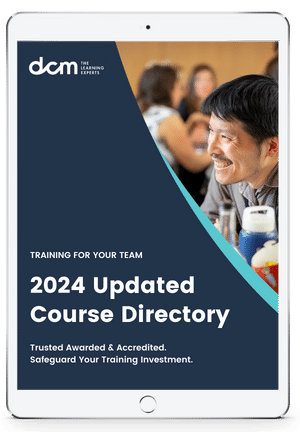Lean Six Sigma is a combination of two popular Continuous Improvement methods—Lean and Six Sigma—that pave the way for operational excellence. These time-tested approaches provide organizations with a clear path to achieving their missions as fast and efficiently as possible.
A Definition of Terms
Before defining Lean Six Sigma in more detail, it’s important to clarify the concept of process improvement. Since Lean Six Sigma is a system for analyzing and improving processes we’ll break down those terms first.
What is a Process?
A process is a series of steps involved in building a product or delivering a service. Almost everything we do is a process—tying our shoes, baking a cake, treating a cancer patient, or manufacturing a cell phone.
What is Process Improvement?
Process improvement requires employees to better understand the current state of how a process functions in order to remove the barriers to serving customers. Since each product or service is the result of a process, gaining the skills required to remove waste, rework or inefficiency is critical for the growth of an organisation.

Working On a Process vs In a Process
Employees are hired based on their expertise in a given field. Bakers are good at baking and surgeons are good at performing surgery. Professionals are experts at working in a process, but they are not necessarily experts at working on a process. Learning to work on and improve processes requires experience and education in Continuous Improvement. That’s where Lean Six Sigma comes in.
Combining Lean & Six Sigma
Lean Six Sigma provides a systematic approach and a combined toolkit to help employees build their problem-solving muscles. Both Lean and Six Sigma are based on the Scientific Method and together they support organizations looking to build a problem-solving culture. This means that “finding a better way” becomes a daily habit.
The Origins
Lean originated at Toyota in the ’40s and Six Sigma originated at Motorola in the ’80s. Although they’ve been taught as separate methods for many years, the line has blurred and it’s now common to see Lean & Six Sigma teachings combined in order to reap the best of both worlds.
Understanding both approaches and accompanying toolkits is extremely valuable when solving problems. It doesn’t matter where a tool comes from—Lean or Six Sigma—as long as it does the job. By combining these methods you have the best shot at applying the right mindset, tactics and tools to solve the problem.
Two Methods at a Glance
Lean uses the PDCA—Plan-Do-Check-Act/Adjust—method and tools like 8 Wastes and 5S to achieve continuous improvement.

Six Sigma uses the DMAIC— Define-Measure-Analyze-Improve-Control—method and tools like Control Charts and FMEA to achieve continuous improvement.

We are very proud of the advisory team in DCM. If you have any questions (it doesn't matter what) please ask. The team would be delighted to help. For more details about the Certified Lean Six Sigma Green Belt or Yellow Belt courses you can download the full course brochures on the course pages.
Lean Reviews: Stories from Our Customers
Over the past 2 years, over 2,000 learners (2,197 to be exact) have come to DCM to learn more about lean and get certified. Read (and watch) their reviews to see how our courses have helped them achieve their career goals.
Inhouse Tailored Training for Your Team
We provide training programs that are developed by industry, for industry. Our range of programs can be delivered in a way that suits the needs of your business to offer your employees learning that is accessible and flexible.
We add value to your business by providing specialised, flexible and scalable training that meets your Coaching education needs. As your workforce grows and evolves, our globally certified and industry-validated learning solutions can assess, train and qualify your employees. For more information on how we can help please visit the in-house training page.
Membership, Stay Connected. Stay Relevant.
Completing a program is a point-in-time exercise that delivers huge value, but there is a next step to maintaining the currency of your skills in the ever-evolving professional world.
Membership is the next step.
A unique platform, membership is designed to ensure that you are in tune and up-to-date with the latest tools, trends and developments. Being a member provides just-in-time training and continuous professional development, and an exclusive and evolving content library informed by subject matter experts and industry leaders.







